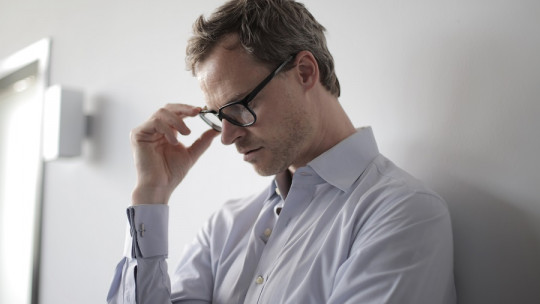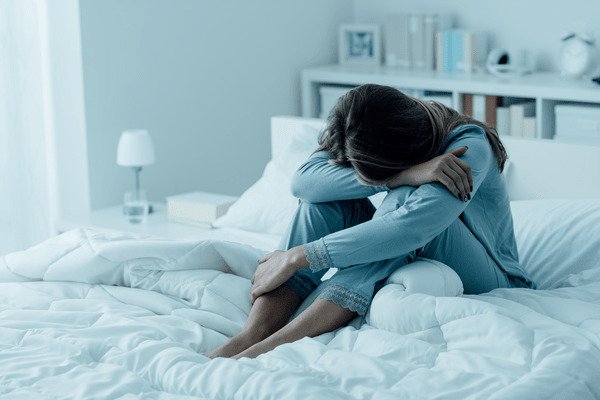
Anxiety and anguish are those mental and physical symptoms that are manifested in all therapeutic consultations, without exception. Anxiety is the visible tip of the iceberg, which presents an immense set of covert, unhealed emotions.
Childhood injuries or situations with traumatic characteristics experienced in childhood that remain stored, repressed and unresolved, are those that are activated when some memory brings them to the present in adult life, thus generating anguish and anxieties.
What characteristics does anxiety present?
Let’s start by explaining what it is about. It is a mental state characterized by intense worry, real or imagined in a person’s thoughts.
When we say real we can take as examples, work meetings, taking an exam, public speaking, medical consultations, among others; and when we say imaginary, they are those situations that the mind thinks with ruminative insistence that could occur, potentially in the present or future, without any certainty that this will happen.
Although anxiety at certain levels is normal and productive in life, when it settles for days or months without being able to be managed to dissipate it, that is when we must give it greater attention or ask for professional help
When there is intense worry, certain emotions are activated such as: insecurity, fears, anxieties, excessive concern about the future, which, being unknown to the patient, is where it resides and lives, symbolically and unconsciously. They are called anxiety disorders, since when they become present in the person, they modify or alter all areas and aspects of their life, negatively changing the quality of life of those who suffer from it.
These patients have the characteristics of feeling devalued, and feeling the desire to control everything, anger, anger, anger towards themselves and towards others, manifesting this in the therapeutic consultation.
This set of unresolved emotions that were accumulated in the course of growth and development of life They also give rise to physical symptoms with various characteristics, such as tachycardia, sweating, nervousness, body movements, insomnia, fatigue, chest pains, headaches, sensation of lack of air, among others.
At what point is it necessary to consult a professional?
Certain levels of anxiety are necessary acting as a natural defense mechanism to be able to live and respond to situations that the subject interprets as threatening, this also being, in its proper measure, the engine that allows us to advance, search and project those things that are desired.
When these levels of anxiety are high and go from the acute phase to the chronic phase, this is where both the somatic and psychological manifestations begin, disturbing the quality of life of those who suffer from it with the appearance of the aforementioned somatizations.
When the state of anxiety sets in, it disables the patient in the different areas of their life, generating significant discomfort both in their internal state and in their relationships, with emotional ties being where these discomforts are accentuated, generating tense situations, crises or conflicts that are difficult to repair, with a negative impact.
It is in these moments and without being able to recognize or manage what is happening when professional help should be sought, with the aim of generating a question in the patient and searching for answers, repairing and healing such emotions.
How to work on anxiety symptoms?
Anxiety can manifest in the patient in a mild, moderate or severe way, varying its somatic-physical and mental-emotional intensity When it is of mild intensity, the therapeutic treatment with the staging of the word, working on the covert emotions and the cause that generates said anxiety, will be sufficient to change the subjective position or manage them, relieving in a way effective the symptom.
If the intensity is moderate, therapeutic treatment is recommended by adding Holistic tools such as: breathing techniques, meditation and relaxation, deep inhalations and slow exhalations, Mindfulness, concentrating attention on the action being carried out in the present, in the here and now, applying these resources and tools at various times of the day in order to stabilize these anxieties and return to an axis and balance between the body, mind and soul.

It will also be necessary to start work on patient rewards those who were surely suspended due to such symptoms, work on their tastes, in activities and in their leisure time.
These tools generate the change in insistent and ruminative thinking that causes more symptoms. In the event that the anxiety is severe, generating the patient’s inability to manage it, a referral will be necessary to consult with a professional specialist in the area of Psychiatry who will surely indicate medication treatment to alleviate the intensity that the anguish and anxiety could cause. cause in the patient.
Interdisciplinary work is the right one, therapeutic treatment and holistic tools are the appropriate combo to improve the patient’s symptoms and quality of life.
Psychotherapeutic treatments have the objective of diving into those emotions that are latent or behind such somatic manifestations, taking into account their unconscious state, trying to address places that have not been opened for a long time, always respecting the internal times of each patient, each consultant. .
Work with the patient from the word with the objective and neutral position of the therapist, with empathetic and active listening, seeking to make conscious what was repressed, trying to generate movement and action, to get out of those known areas, helping to heal those Childhood Wounds that could be accompanying them in their life and generating pain.
To remember…
Anxiety can be worked on and healed as long as the patient is willing to know the causes of it allowing one to enter its shadows to bring light, knowing that this will involve a process, being painful in some sections, but once gone through, the look at life will change absolutely, and with that new look the quality in all its areas will change.
We must dare to close wounds to allow the flow of life from a different position. Only when you can close and heal is there room for the new.








